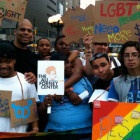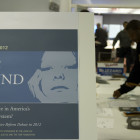
NYC’S Homeless Teens at Risk Due to Budget Cuts, Says LGBT Advocate
|
New York City Mayor Michael Bloomberg’s recently released executive budget could cut $7 million in funding to the city’s Runaway and Homeless Youth Services, effectively eliminating 160 beds from youth shelters across the city. According to a representative from the Ali Forney Center - the city’s largest LGBT youth shelter - the need for shelter beds has increased dramatically in recent years, with the waiting list for the Center growing by 40 percent last year. The Ali Forney Center claims that there are only 250 shelter beds available in New York - despite an estimated homeless youth population of almost 4,000. Carl Siciliano, the Center’s executive director, told The Advocate he considered Bloomberg’s budget cuts to be “cruel, reckless and contemptible.”
“These cuts create an even bigger crisis for the LGBT teens who are thrown out of their homes and forced to endure homelessness on the streets of our city,” he said. “The Ali Forney Center and all those who work with and care about LGBT homeless youth will not be silent in the face of this decision, which offends us as a community and needlessly puts our young people in harm’s way.”
A New York City Independent Budget Office report from March predicted (on page 35) homeless shelter budget cuts, with the investigation identifying an increase in average shelter stay durations as well as the cessation of subsidy programs, such as Advantage, as the primary factors for budget shortfalls.








